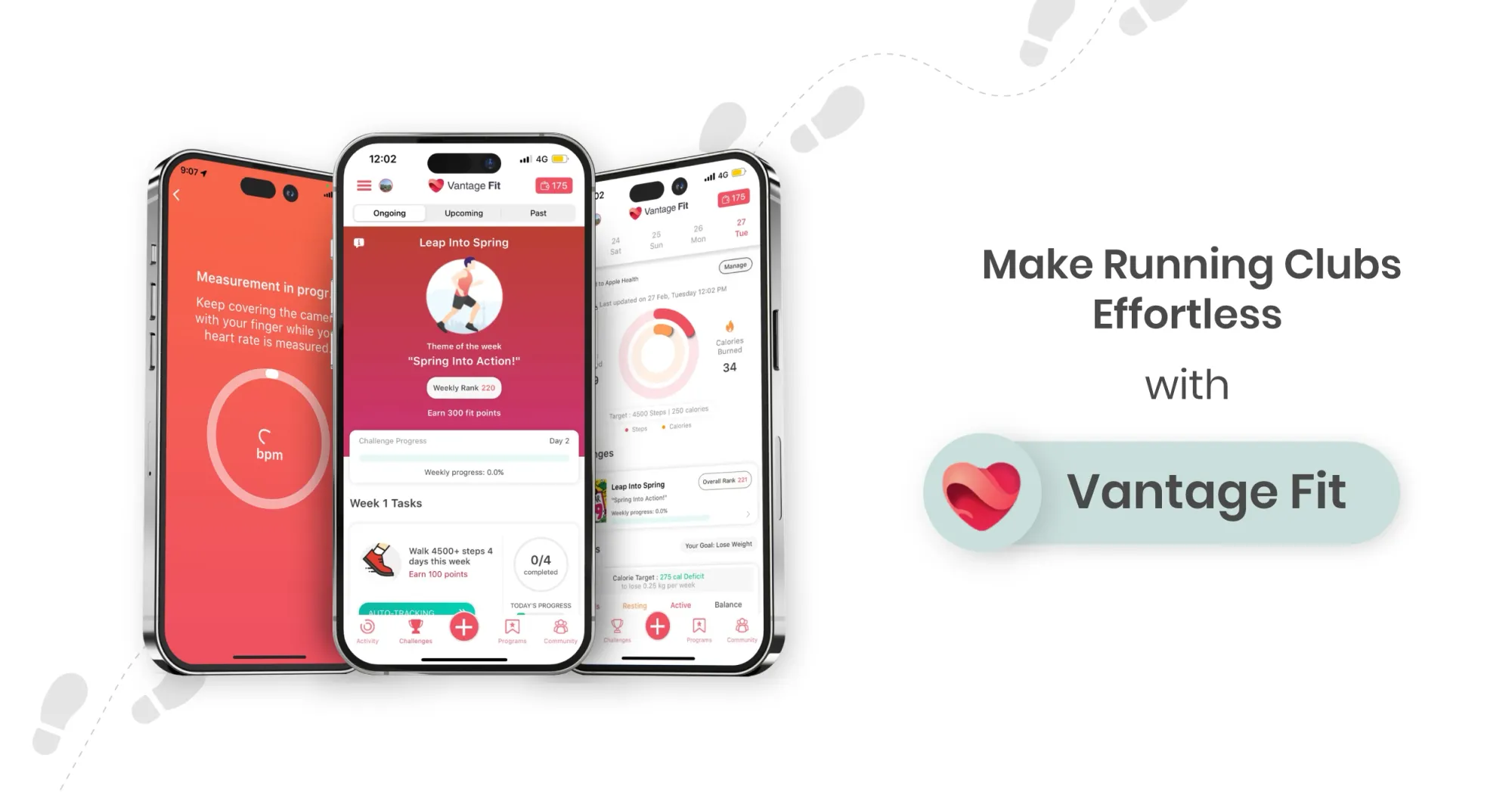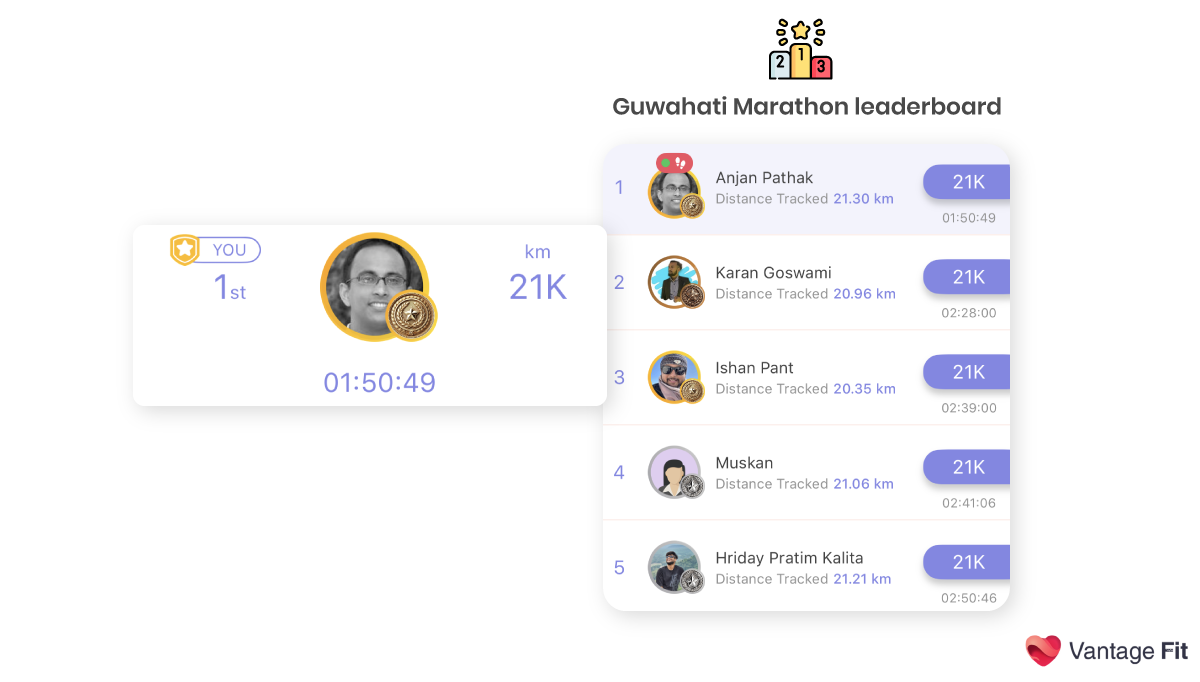How to Start a Running Club at Work: Easy Tips to Get Started
Running is one of the most effective ways to improve health. It strengthens the heart, boosts lung capacity, and helps maintain a healthy weight. Beyond physical benefits, regular running also profoundly impacts mental well-being. It reduces stress, enhances mood, and improves focus.
The release of endorphins during a run helps combat anxiety and fatigue, making running a great way to stay energized throughout the day. While running alone is beneficial, being part of a running club amplifies the advantages.
A workplace running club encourages employees to stay active. It fosters a sense of community and promotes a culture of well-being. It allows colleagues to leave their desks and engage in healthy office habits, helping them to work, feeling refreshed and motivated.
More than a fitness initiative, a workplace running club strengthens teamwork, builds accountability, and improves workplace morale.
It requires an inclusive approach where runners of all levels feel welcome. A structured yet flexible schedule that fits into work routines and a supportive environment encourage participation without pressure.
Leadership support and employee engagement in initiatives like a running club are key to maintaining momentum and ensuring that the club becomes an integral part of the company culture.
A workplace running club stands out from general fitness groups because it is simple and accessible. Unlike gym-based programs, it requires minimal equipment. There are no membership fees, and participation is flexible.
Employees can train for a marathon or go for a casual jog. The club supports different goals while promoting health and wellness.
Are you thinking of starting a running club at work? This guide will help you learn how to set it up, keep employees engaged, and ensure long-term success.
Steps to Start a Running Club at Work
Step 1: Assess Interest & Build a Core Group

Gauging employee interest is essential before launching a workplace running club. Identify potential leaders who can champion the initiative. Start by conducting a quick survey using Google Forms, Slack polls, or intranet tools.
This will help us understand how many employees would be interested in joining. Look out for existing runners or fitness enthusiasts—employees who can help drive engagement and encourage participation.
To maximize sign-ups, leverage informal networking. Connect with managers, social connectors, or influential colleagues who can spread the word. Psychological safety is also essential. Consider using anonymous surveys to ensure employees feel comfortable expressing interest, especially for those who might be hesitant about group fitness.
If commitment is a concern, test the waters with a four-week pilot program. This low-pressure trial allows employees to experience the benefits without a long-term obligation. You can even introduce a fitness app to track progress and boost motivation.
Step 2: Define the Club's Purpose & Structure

A successful running club needs a clear purpose and structure. Determine the primary goal—will the club focus on casual fitness, race training, stress relief, or team bonding? Once the purpose is set, establish a practical schedule. Some companies find biweekly lunch runs work well, while others prefer post-work jogs to unwind after a busy day.
Aligning the club with company values can also drive engagement. If sustainability is a priority, consider "plogging" (picking up trash while jogging). If inclusivity is key, make sure to welcome all levels—from walkers to marathon trainers. Another way to add value is linking the club's impact to measurable outcomes.
For example, studies suggest that regular exercise can reduce absenteeism, which could be a compelling point when seeking leadership support.
Step 3: Plan the Logistics

Once the purpose is clear, focus on the logistics. Choose safe and accessible running routes, be it an outdoor park, an office treadmill, or even stair-climbing for urban workplaces. To cater to all fitness levels, organize pace groups: one for walkers, one for beginners, and another for experienced runners.
Weatherproofing the club is also important
Consider partnering with a local gym or community centre for backup indoor options. To ensure sustainability, avoid putting all the work on one person.
Rotate organizing duties so no one feels overwhelmed. If your company has remote employees, integrate a hybrid model using fitness apps. Apps like Vantage Fit or Strava ease participation regardless of location.
Step 4: Gain Leadership Support
Securing leadership buy-in can make a big difference in the club's long-term success. Present the benefits of a running club, such as improved employee well-being, stronger team connections, and increased productivity. Request a small budget for essentials like club T-shirts, hydration stations, or race entry fees.
To get leadership actively involved, invite them to participate in a company-wide "CEO 5K" or a friendly leadership challenge. Having executives on board legitimizes the initiative and boosts visibility and engagement across teams.
Step 5: Launch with Inclusivity

A welcoming and inclusive environment is key to the running club's success. Establish ground rules that encourage participation from all fitness levels—there is no speed shaming, and walkers are just as welcome as runners. Kick things off with a relaxed first session, such as an icebreaker run followed by a casual post-run coffee meet-up.
Introduce mentorship pairs where experienced runners support beginners to make the club feel more inviting. Add themed runs like "Mindfulness Jogs," where participants focus on deep breathing and stress relief. These small touches help create a space where employees feel comfortable and motivated to keep showing up.
Step 6: Sustain Engagement

Keeping the momentum going requires regular engagement. Check-in with members through feedback surveys to adjust meeting times, routes, or activities based on their preferences. Social events can also strengthen the community aspect—organize occasional post-run breakfasts or virtual coffee chats for remote members.
Adding surprise perks can boost retention. Consider recognizing consistent attendees with small rewards like coffee vouchers or fitness-related goodies. Another way to build long-term engagement is by creating an alumni network where past members can cheer on recruits, keeping the community strong even as people move roles or companies.
For a more significant impact, align the club with corporate social responsibility (CSR) goals. Organize charity runs where the company donates a set amount per mile run or introduce an annual "Department Cup" with fun competitions and trophies. These initiatives keep participation high while reinforcing the club's value beyond just fitness.
Step 7: Measure Success & Scale

Tracking progress is crucial for demonstrating the club's impact and securing long-term support. Monitor participation rates, collect employee feedback, and assess how the club contributes to workplace well-being. Look beyond numbers—notice silent wins, like fewer burnout complaints or improved team collaboration.
As the club grows, consider expanding its offerings. To keep things fresh, introduce yoga cooldown sessions, nutrition workshops, or guest coaching sessions. Building partnerships with local smoothie bars or wellness brands for post-run discounts can also add an extra incentive.
The workplace running club can become a long-term pillar of corporate wellness by continuously evolving and responding to employee needs.
Get Started Today: Vantage Fit Makes Running Clubs Effortless
A thriving workplace running club is more than just a fitness initiative; it's a way to bring employees together, boost morale, and promote a culture of health and well-being.
However, for a running club to succeed, it must be accessible, well-organized, and engaging.
That's where Vantage Fit comes in, providing the tools and support necessary to make managing a corporate running club seamless and enjoyable.

How Vantage Fit Simplifies Workplace Running Clubs
1. Streamlined Team Communication
Effective communication is key to keeping employees engaged and informed. Vantage Fit offers a centralized platform where organizers can share updates, coordinate running schedules, and effortlessly communicate with members.
2. Seamless Participation for Remote Employees
Running clubs shouldn't be limited to in-office employees. Vantage Fit enables hybrid and remote workers to join the fun through virtual running challenges . With GPS tracking and integration with popular fitness apps, employees can log their runs from anywhere, making the club truly inclusive and borderless.

3. Motivation Through Progress Tracking
Tracking progress is a great way to keep employees motivated. Vantage Fit provides real-time analytics and performance insights, allowing runners to monitor their distance, pace, and milestones. Gamification elements like leaderboards, achievements, and rewards encourage participation and healthy competition.
4. Community-Building Through Engagement Features
A sense of community transforms a simple running club into an integral part of workplace culture. Vantage Fit fosters engagement through social features such as group chats, shoutouts for achievements, and friendly challenges.

Make Running a Workplace Tradition
Starting a workplace running club might seem daunting. The right approach and tools can make it an effortless and rewarding experience. Vantage Fit equips companies with everything they need to create a well-structured and engaging running club. Benefiting both employees and the organization.
Take the first step towards a healthier, more connected workplace—get started today!
FAQs
1) What are the benefits of starting a running club at work?
A workplace running club improves employee well-being, builds stronger team connections, and enhances productivity.
2) Do I need to be a runner to join or start a running club?
Not at all! Workplace running clubs are open to everyone, including walkers and beginners.
3) When is the best time to schedule runs?
The best time depends on employee preferences and work schedules. Lunchtime runs offer a refreshing mid-day break, while post-work sessions allow employees to wind down before heading home.
4) What if no one wants to lead the running club?
If no one wants to take full responsibility, consider rotating leadership among members. Form a small organizing team.
5) What if running isn't part of our company culture?
Start small and position it as a casual, low-pressure initiative. Focus on benefits beyond fitness, such as stress relief, social connection, and personal goal setting.



